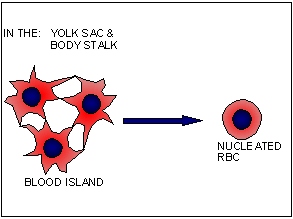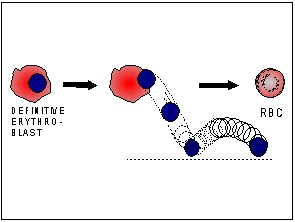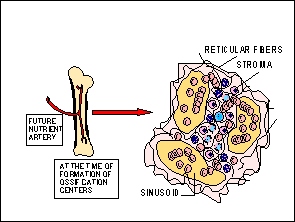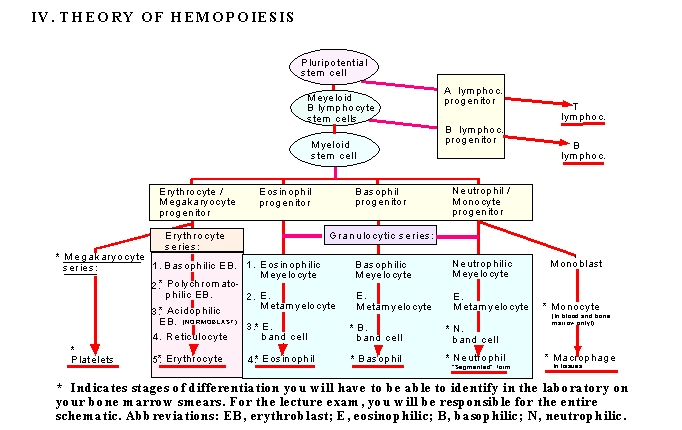C. CLASSIFICATION OF BLOOD CELL TYPES
Based on color in vivo and after staining in vitro.
 |
(NOTE: "Classification" -- means: The grouping of blood cells according to their morphological and staining differences. So, a neutrophil would be classified as a "granular leukocyte" so would the eosinophil or the basophil. Lymphocytes and monocytes would be classified as "agranular leukocytes." Erythrocyes are classified as "erythrocytes," so identification and classification for RBC's is the same. If you are asked to identify a granulocyte, then you would have to write its name e.g., basophil, eosinophil or neutrophil. Similarly with the agranular leukocytes, e.g., a lymphocyte may be identified as a small or medium lymphocyte.)



